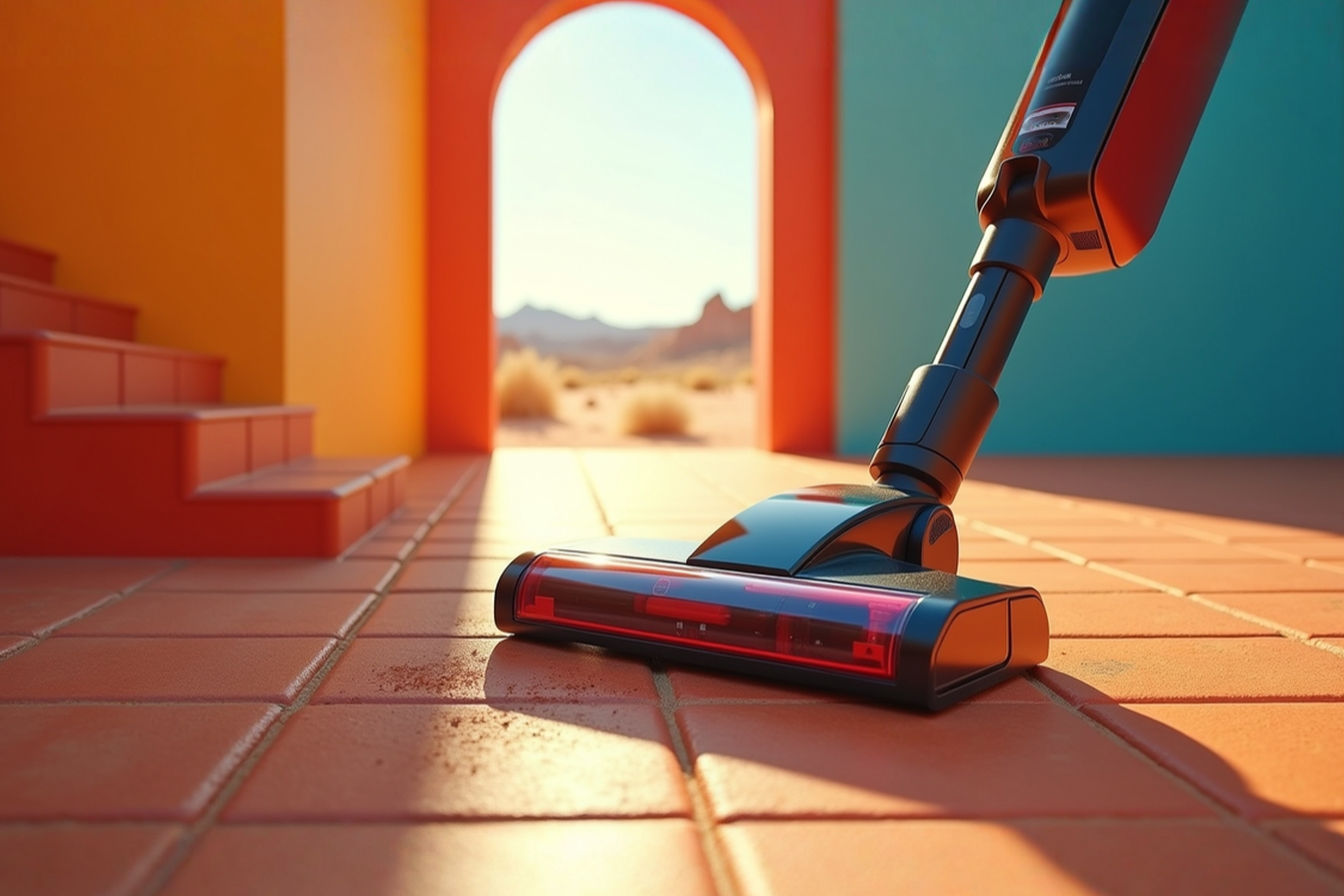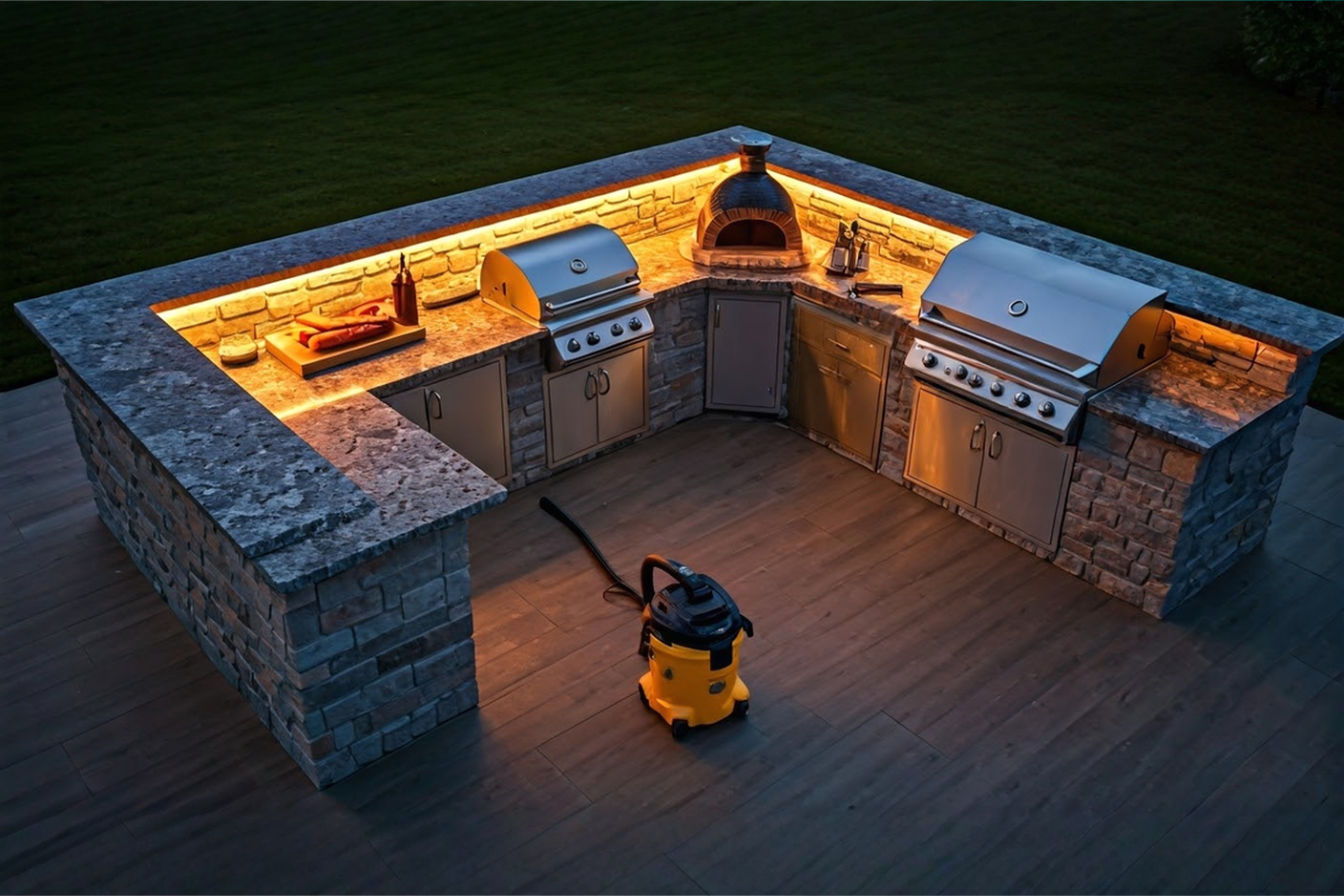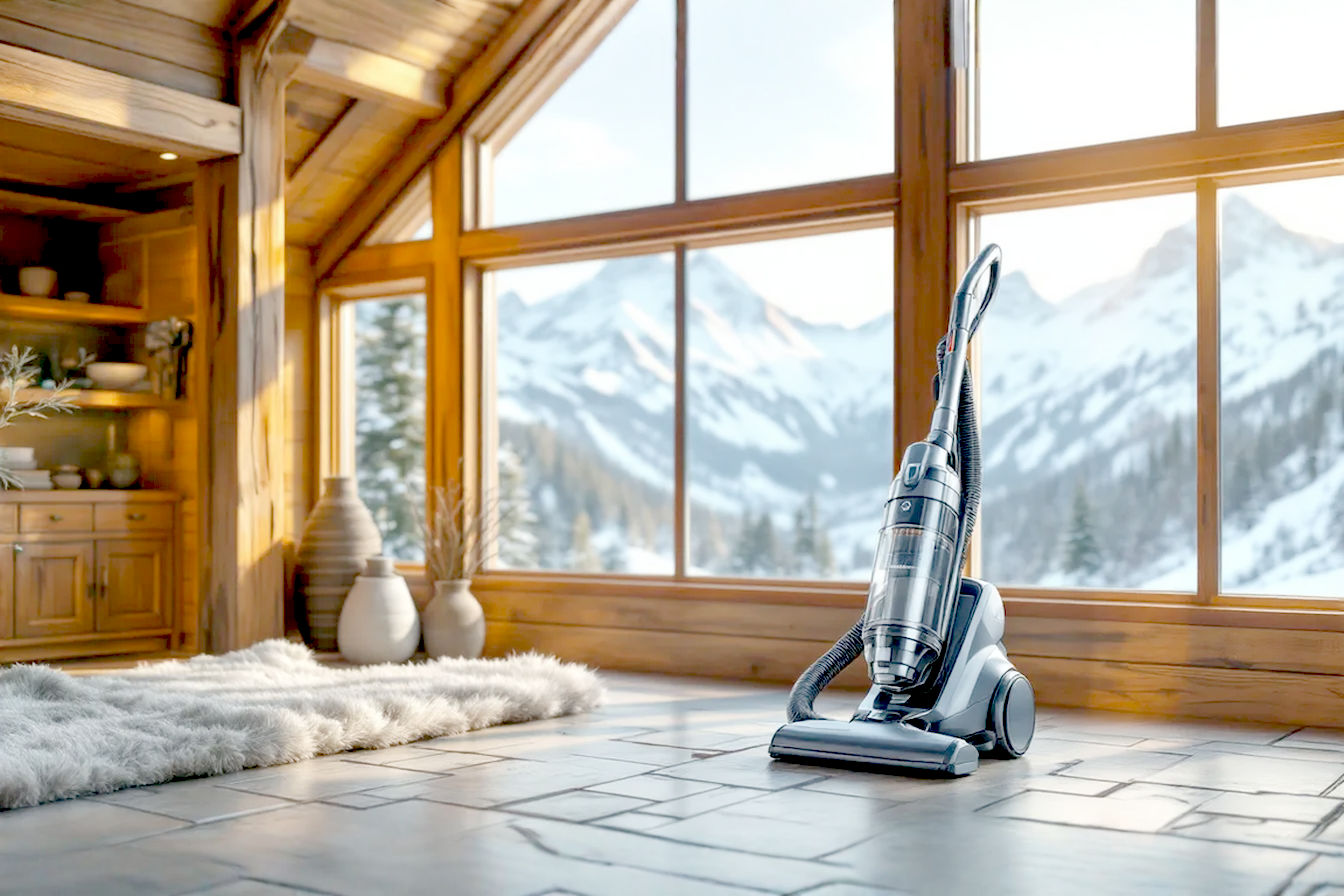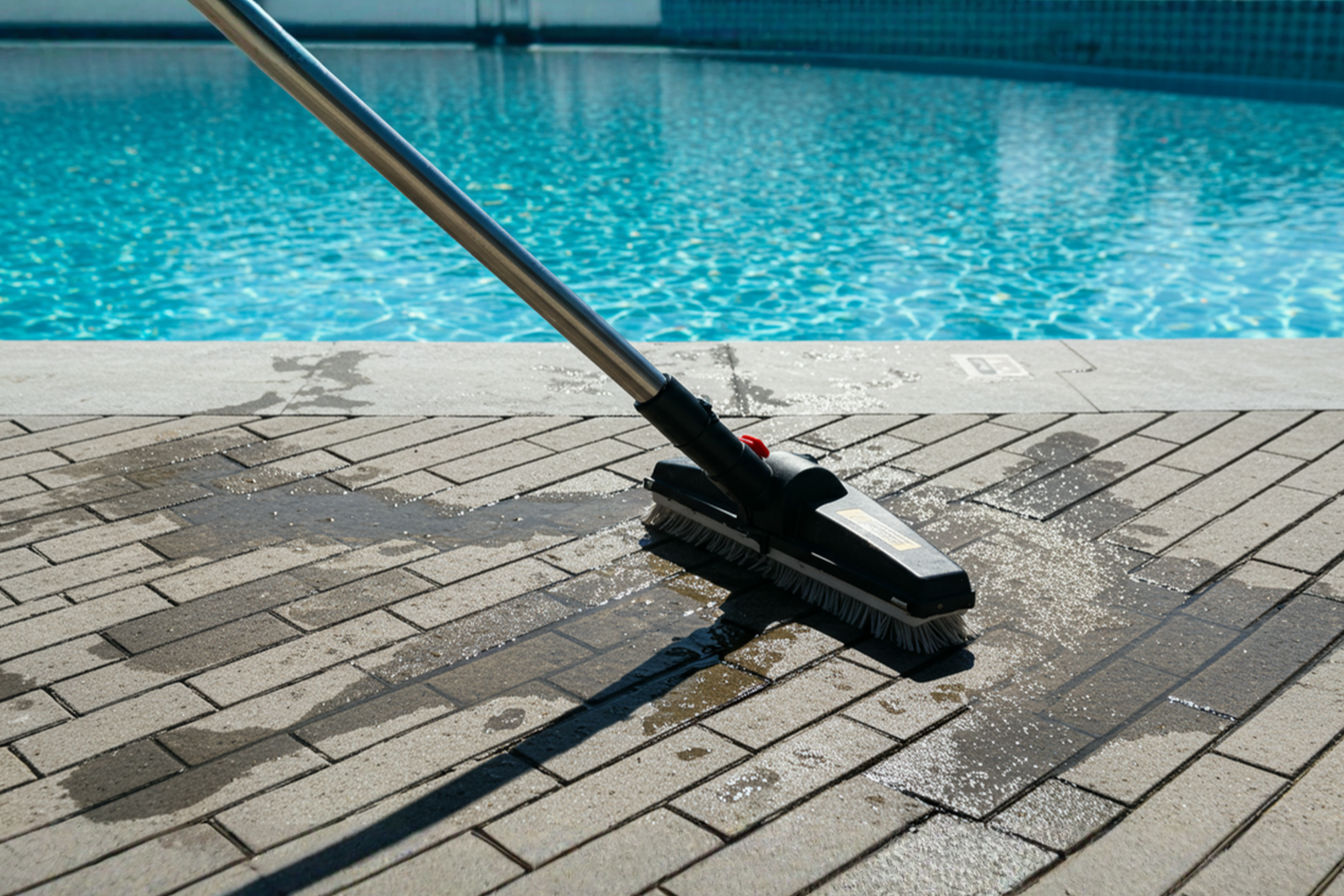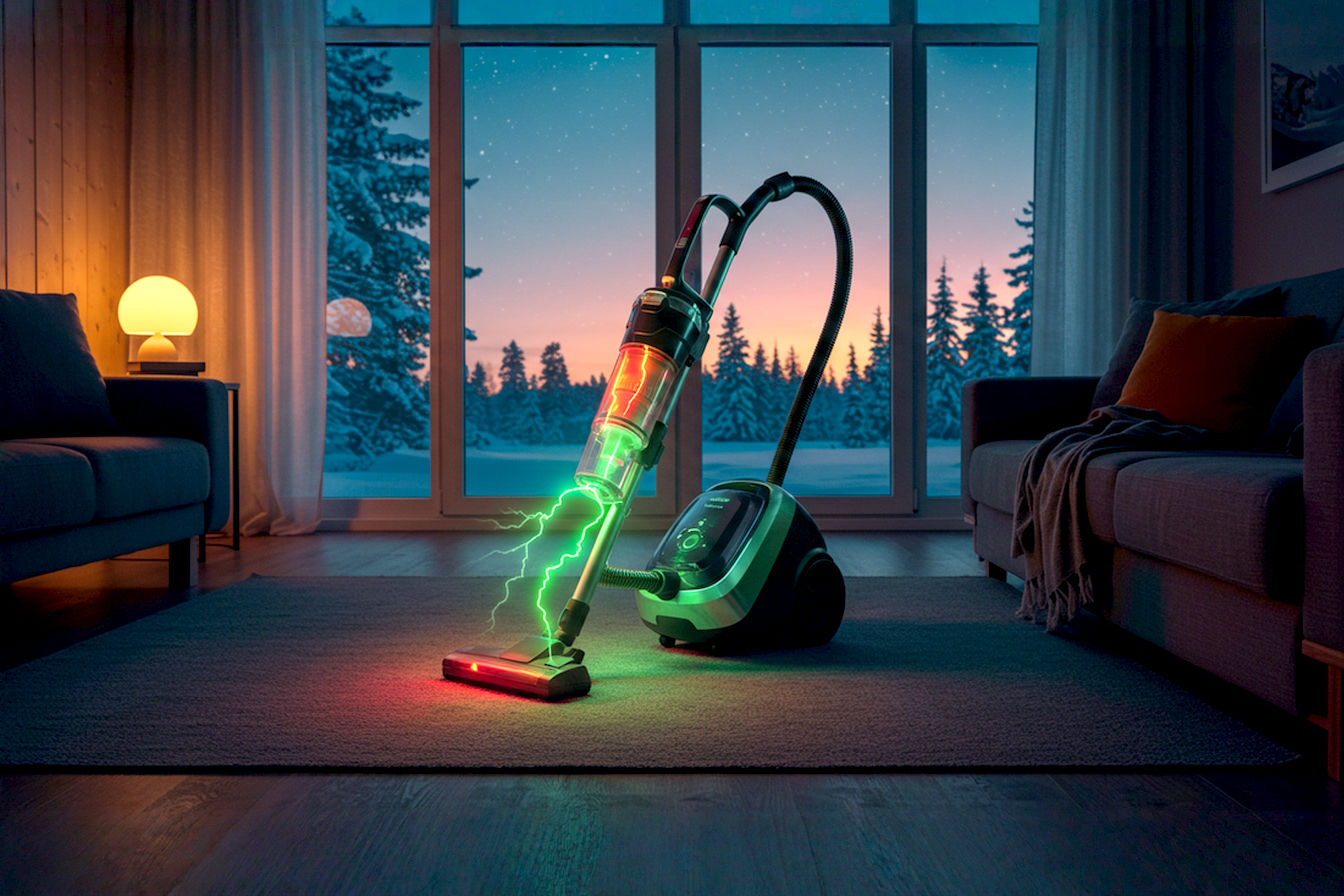Desert Home Challenges: Vacuums That Handle Fine Dust Without Clogging
Fine desert dust can quickly clog standard vacuums, but specialized models with advanced filtration and anti-clogging technology offer effective solutions. Discover how to keep your desert home clean without constant vacuum maintenance.
This post may contain affiliate links. If you make a purchase through these links, we may earn a commission at no additional cost to you.
Living in a desert environment presents unique challenges for homeowners, particularly when it comes to keeping indoor spaces clean. The fine dust and sand particles that characterize these regions can infiltrate even the most well-sealed homes, creating a constant battle against dust accumulation. Unfortunately, standard vacuum cleaners often fall short in these conditions, quickly clogging and losing suction power when confronted with the ultra-fine particles common in desert regions. This comprehensive guide explores the specialized vacuum cleaners and technologies that can effectively manage desert dust without the frustration of constant clogging.
Understanding Desert Dust: A Different Kind of Challenge
Desert dust differs significantly from typical household dust in ways that directly impact cleaning equipment performance. While standard household dust consists mainly of larger particles like skin cells, pet dander, and fabric fibers, desert dust contains a much higher percentage of mineral particles that are often extremely fine.
The composition of desert dust typically includes:
- Silica and quartz particles (from sand)
- Clay minerals
- Iron oxides (giving many desert soils their reddish hue)
- Calcium carbonate
- Microscopic plant matter
The most challenging aspect of desert dust is its particle size. Desert environments frequently contain particles smaller than 10 microns (PM10) and even below 2.5 microns (PM2.5). For comparison, a human hair is about 70 microns thick. These ultrafine particles can easily penetrate standard vacuum filters, recirculate into the air, and quickly clog conventional vacuum systems.
These tiny particles behave differently than regular dust. They:
- Remain airborne longer
- Penetrate deeper into vacuum components
- Create more static electricity
- Form dense compacted masses when collected
- Can be abrasive to vacuum components
The health implications of desert dust accumulation aren’t trivial either. These fine particles can trigger respiratory issues, exacerbate allergies, and worsen conditions like asthma. The silica content in some desert dust can even pose long-term health risks with prolonged exposure. Effective vacuum filtration isn’t just about machine performance—it’s about creating healthier indoor environments.
Key Vacuum Features for Desert Environments
When shopping for a vacuum that can handle desert conditions, several critical features separate those that will quickly become paperweights from those that will provide years of reliable service.
Multi-Stage Filtration Systems
A multi-stage filtration system is essential for desert environments. These systems capture particles progressively, with each stage handling different sized particles.
A truly effective system typically includes:
- Pre-filters that capture larger particles
- Main filters that trap medium-sized dust
- Post-motor filters (ideally HEPA) that capture microscopic particles
- Activated carbon layers to absorb odors
The benefit of this approach is that each filter stage protects the next from premature clogging. Pre-filters can be cleaned or replaced more frequently and inexpensively, while the more expensive HEPA filters remain protected and functional longer.
Cyclonic Technology and Its Benefits
Cyclonic technology represents a significant advancement for desert vacuum applications. These systems use centrifugal force to separate dust from the airstream before it reaches any filters.
How cyclonic technology works:
- Air enters the vacuum and spins rapidly in a conical chamber
- Centrifugal force pushes dust particles outward toward the walls
- Particles fall into a collection container while clean air passes through the center
- Multiple cyclones (multi-cyclonic systems) enhance this separation process
The primary advantage for desert homeowners is that much of the fine dust never reaches the filters, preventing premature clogging and maintaining suction power. Many premium vacuums feature 5-15 cyclones of varying sizes to target different particle dimensions.
Motor and Suction Power Considerations
Desert environments demand more from vacuum motors. Look for:
- Higher wattage motors (1200+ watts for corded models) that maintain performance even as some dust inevitably reaches the motor
- Digital motors in premium models that provide more consistent suction and efficiency
- Adjustable suction controls to adapt to different surface types and dust conditions
- Sealed motor compartments that prevent fine dust infiltration
While power matters, it’s worth noting that raw suction power isn’t everything—a well-designed airflow system with moderate power often outperforms a poorly designed system with higher power specifications.
Self-Cleaning Mechanisms
Modern vacuum cleaners increasingly incorporate self-cleaning mechanisms specifically designed to address clogging issues:
- Filter-cleaning mechanisms that shake or vibrate filters to dislodge trapped particles
- Brush roll cleaners that cut away hair and fibers that would otherwise trap dust
- Anti-clog sensors that detect blockages and adjust suction or alert users
- Tangle-free designs that prevent desert plant fibers from wrapping around moving parts
These features reduce maintenance requirements and extend the effective cleaning time between interventions—a significant advantage in heavily dust-laden environments.
Dust Capacity and Emptying Systems
Desert living means collecting more dust, so capacity matters. Consider:
- Larger dust bins or bags (2+ liters) to reduce emptying frequency
- Bottom-empty dust bins that minimize dust clouds during emptying
- Sealed emptying systems where the collected dust releases directly into trash bags
- Compacting systems that compress collected dust to maximize capacity
The ideal emptying system minimizes user exposure to dust—an important consideration for those with allergies or respiratory sensitivities.
Top Vacuum Technologies That Combat Desert Dust
Several advanced technologies have proven particularly effective against the challenges of desert environments.
HEPA Filtration Technology Deep Dive
HEPA (High-Efficiency Particulate Air) filtration represents the gold standard for desert homes. True HEPA filters capture 99.97% of particles as small as 0.3 microns—including most desert dust particles.
What makes HEPA technology especially effective is the combination of three different capture mechanisms:
- Interception – Particles following airstream lines come within one radius of a fiber and adhere
- Impaction – Larger particles unable to follow airstream curves collide with fibers
- Diffusion – Smaller particles move erratically due to Brownian motion, increasing their chances of capture
For desert applications, look for sealed HEPA systems where all air must pass through the HEPA filter rather than leaking around it. Some manufacturers use terms like “HEPA-type” or “HEPA-like”—these typically don’t meet true HEPA standards and should be avoided for desert applications.
Multi-Cyclonic Separation Systems
Advanced multi-cyclonic systems have revolutionized how vacuums handle fine dust. Premium models often feature:
- Primary cyclones that handle larger particles
- Secondary mini-cyclones (sometimes 15+ in high-end models) specifically sized to target desert dust
- Aerodynamically optimized pathways that maintain airflow efficiency
- Anti-static materials that prevent dust from sticking to internal surfaces
These sophisticated systems can separate and capture over 99% of dust before it reaches any filters, dramatically reducing maintenance requirements while maintaining consistent suction.
Sealed System Technology Explained
A completely sealed vacuum system ensures that once dust enters the vacuum, it doesn’t escape until properly disposed of. This technology:
- Uses gaskets and sealed connections at every junction
- Features rubber seals around filter edges
- Incorporates post-motor filtration to capture motor carbon dust
- Tests for air leakage during manufacturing
Sealed systems provide significant benefits for desert dwellers:
- Prevents fine dust recirculation
- Maintains consistent airflow and suction
- Protects internal components from dust infiltration
- Improves indoor air quality during cleaning
Advanced Brush Roll Designs
The humble brush roll has evolved considerably to meet desert challenges:
- Carbon fiber bristles reduce static buildup that attracts fine dust
- Self-adjusting heads maintain optimal contact on different surfaces
- Counter-rotating brushes improve pickup while preventing kickback
- Active debris gates prevent larger particles from blocking airflow
- Detachable brush rolls for easy cleaning and maintenance
The best designs for desert environments feature brushes that effectively agitate surfaces to release embedded dust while preventing that dust from being pushed back into the air.
Specialized Desert Dust Attachments
Many vacuum manufacturers now offer accessories specifically designed for desert environments:
- Fine dust extractors with specialized intake designs
- Soft brush attachments that better collect surface dust without scratching
- Crevice tools with wider openings less prone to clogging
- Pre-filter screens that fit over standard attachments
- Extended wands for reaching ceiling fans and high surfaces where dust accumulates
These attachments enhance the versatility of desert vacuum systems, allowing targeted cleaning of problem areas where dust typically accumulates.
Bagged vs. Bagless: Which Works Better in Desert Homes?
The bagged versus bagless debate takes on special significance in desert environments.
Pros of Bagged Systems for Desert Homes
Bagged vacuum systems offer several advantages:
- Dust remains completely contained during disposal
- Higher capacity before performance degradation
- Better filtration as the bag itself acts as an additional filter
- Less maintenance of the filtration system
- Reduced exposure to allergens during emptying
Modern high-performance bags are constructed with multiple layers of filtration material and self-sealing mechanisms to prevent dust clouds during disposal.
Pros of Bagless Systems for Desert Homes
Bagless vacuum cleaners have their own set of benefits:
- No recurring bag costs (significant over time)
- Never lose suction due to bag fullness
- Visual indication of collection container fullness
- Easy identification of problematic materials
- More environmentally friendly without disposable bags
The most effective bagless systems for desert use feature cyclonic action and easy-empty dust bins that minimize dust disturbance.
Filtration Efficiency Comparisons
When it comes to filtration efficiency in desert conditions:
- High-quality bagged systems generally maintain better filtration consistency over time
- Bagless systems offer initially excellent filtration that can degrade if not maintained properly
- Premium bagless models with multiple cyclones can match or exceed bagged performance
- Both types require HEPA filtration for optimal desert performance
Maintenance Requirements and Long-Term Costs
Maintenance considerations differ significantly:
Bagged Systems:
- Replace bags every 1-2 months in desert environments
- Replace HEPA filters annually
- Clean motor filters twice yearly
- Higher ongoing costs for quality bags
Bagless Systems:
- Empty collection bins after each use
- Wash pre-filters monthly
- Clean cyclone chambers quarterly
- Replace HEPA filters annually
- Higher initial cost but lower long-term expense
The ideal choice depends on personal preferences regarding maintenance frequency versus ongoing costs.
Canister vs. Upright vs. Stick: Form Factors for Desert Cleaning
Different vacuum designs offer distinct advantages for desert environments.
Canister Vacuums in Desert Environments
Canister vacuums separate the motor unit from the cleaning head, offering:
- Larger dust capacity ideal for desert accumulation
- Superior filtration systems with more space for advanced filters
- Better maneuverability around furniture
- Specialized attachments for different surfaces
- Quieter operation with better insulated motors
The separate canister design allows for larger, more sophisticated filtration systems—a significant advantage when dealing with fine desert particles.
Upright Vacuums for Desert Homes
Upright vacuums combine the motor and cleaning head in a single unit:
- Powerful agitation for carpets where dust settles deeply
- Larger cleaning paths for efficient coverage
- Convenient storage in smaller spaces
- Simplified operation without separate components
- Direct suction path that can be advantageous for larger particles
The best desert-capable uprights feature lift-away canisters for versatility and sealed HEPA filtration systems.
Stick Vacuums in Arid Environments
Modern stick vacuums have evolved to offer:
- Lightweight convenience for quick cleaning
- Battery operation for portable cleaning anywhere
- Easy storage in tight spaces
- Convertible designs for handheld operation
- Simple maintenance with accessible components
While traditionally less powerful, premium stick vacuums now incorporate digital motors and cyclonic technology that can effectively handle desert dust, especially for daily maintenance cleaning.
Performance Considerations for Each Type
When evaluating vacuum types specifically for desert performance:
- Canisters generally offer the best overall filtration and capacity
- Uprights provide superior deep cleaning on carpets where dust settles
- Stick vacuums excel for maintenance cleaning and quick touch-ups
- Robot vacuums with HEPA filters help maintain daily cleanliness
Many desert homeowners find that a combination approach works best: a powerful canister or upright for deep cleaning, supplemented by a convenient stick or robot vacuum for daily maintenance.
Maintenance Tips to Prevent Clogging in Desert Conditions
Even the best vacuums for desert conditions require proper maintenance to perform optimally.
Optimal Cleaning Frequency Schedules
In desert environments, adjust cleaning frequencies to prevent dust buildup:
- Vacuum high-traffic areas daily
- Clean primary living spaces every 2-3 days
- Address bedrooms and less-used spaces weekly
- Deep clean under furniture bi-weekly
- Vacuum upholstery and drapes monthly
This frequent cleaning prevents dust from accumulating and becoming more difficult to remove. It also reduces the load on each cleaning session, decreasing the chance of clogging.
Filter Maintenance and Replacement Guidelines
Desert conditions necessitate more aggressive filter maintenance:
Pre-filters:
- Inspect weekly
- Clean every 2-4 weeks
- Replace every 3-6 months
HEPA Filters:
- Inspect monthly
- Replace every 6-12 months (sooner in extremely dusty conditions)
- Never wash true HEPA filters unless specifically marked as washable
Motor Filters:
- Check monthly
- Clean every 2-3 months
- Replace annually
Proper filter maintenance is the single most important factor in preventing vacuum clogging in desert environments.
Clearing Clogs Safely and Effectively
When clogs do occur:
- Turn off and unplug the vacuum immediately
- Check for visible blockages at entry points
- Disassemble components systematically
- Use long, flexible tools rather than sharp objects
- Clear hoses with broom handles wrapped in cloth
- Test suction at each section when reassembling
Avoid using water to clear clogs in most components, as this can create mud that causes worse blockages and potential electrical hazards.
Extending Vacuum Lifespan in Harsh Conditions
To maximize the lifespan of desert vacuum cleaners:
- Store in climate-controlled spaces away from extreme heat
- Clean exterior surfaces regularly to prevent dust buildup
- Check and clean brush rolls after each use
- Inspect electrical cords for heat damage
- Lubricate wheels and moving parts periodically
- Keep spare filters on hand for immediate replacement when needed
With proper maintenance, a quality vacuum cleaner can provide years of reliable service even in the harshest desert conditions.
Expert Recommendations: Top Performing Vacuums for Desert Homes
Based on performance testing in desert conditions, certain models consistently outperform others.
Premium Options with Advanced Features
For those seeking the absolute best performance regardless of budget:
Miele Complete C3 Calima
- Sealed system construction
- True HEPA filtration
- Variable suction control
- Specialized desert floor tool
- 4.5-liter dust bag capacity
Dyson V15 Detect
- Advanced multi-cyclonic technology
- Particle sensing technology
- HEPA filtration
- Self-adjusting cleaner head
- Detects and counts dust particles
Sebo Airbelt D4
- Hospital-grade filtration
- 1.5-gallon bag capacity
- 40-foot cleaning radius
- Sealed system design
- Exceptionally quiet operation
These premium options combine powerful suction, advanced filtration, and robust design to handle the most challenging desert conditions.
Mid-Range Alternatives with Good Performance
Excellent desert performance can also be found at more moderate price points:
Shark Navigator Lift-Away Professional
- Sealed HEPA filtration
- Lift-away functionality
- Anti-allergen complete seal
- Large capacity dust cup
- Relatively lightweight design
Kenmore Elite Bagged Canister Vacuum
- HEPA filtration system
- Variable power control
- Pet-focused attachments that work well for sand
- Pop-N-Go floor brush
- 3D inducer motor
Hoover WindTunnel 3 Max Performance
- Multi-cyclonic technology
- HEPA media filter
- Allergen block technology
- 15-inch cleaning path
- Reusable easy-rinse filter
These models provide strong performance for desert conditions without the premium price tag.
Budget-Friendly Choices That Still Handle Desert Dust
Quality desert cleaning is possible even on a tighter budget:
Bissell CleanView Swivel Rewind Pet
- Multi-cyclonic system
- Scatter-free technology
- Washable filters
- Edge-to-edge cleaning
- Easy empty dirt tank
Eureka NEU182A PowerSpeed
- Washable filters
- 4.1L dust capacity
- 5 height adjustment settings
- Lightweight design
- Extra-large dust cup
Dirt Devil Endura Max
- Three-stage filtration
- No-loss suction technology
- CleanPath technology
- Lightweight design
- Washable filter
While these budget options may require more frequent maintenance, they can still provide effective cleaning performance in desert environments when properly maintained.
Specialized Professional-Grade Equipment
For extreme desert conditions or professional applications:
ProTeam Super CoachVac Backpack
- HEPA filtration system
- 10-quart capacity
- Four-level filtration
- Ergonomic harness system
- Commercial-grade construction
Pullman-Holt 86ASB HEPA Vacuum
- True HEPA system
- Steel tank construction
- Dry particulate filtration
- Anti-static hose
- Made for abrasive dust applications
These specialized units are designed for industrial applications but can be excellent choices for homes in extremely challenging desert locations.
DIY Solutions for Existing Vacuums
Not everyone can invest in a new vacuum system. Fortunately, several modifications can improve existing vacuum performance in desert conditions.
Aftermarket Filters and Accessories
Upgrade your current vacuum with:
- HEPA filter retrofits available for many common brands
- Microfiber pre-filters that capture more dust before it reaches main filters
- Electrostatic after-filters that improve particle capture
- High-capacity dust bags designed for allergen control
- Desert-specific floor tools with optimized bristle patterns
These upgrades can significantly improve filtration and reduce clogging without replacing the entire unit.
Modification Techniques for Improved Performance
Simple modifications can enhance desert performance:
- Adding secondary pre-filters cut from HVAC filter material
- Creating cyclonic separators from household containers
- Extending exhaust paths to improve cooling
- Adding gaskets to improve system sealing
- Increasing container capacity with custom modifications
While these DIY approaches won’t match commercial solutions, they can substantially improve performance for minimal cost.
Pre-Filtering Methods to Reduce Clogging
Reduce vacuum strain with pre-cleaning strategies:
- Using electrostatic dusters before vacuuming
- Applying carpet treatments that prevent dust from embedding
- Installing air purifiers to reduce ambient dust
- Employing entrance mats to capture particles at entry points
- Using microfiber mops for initial dust removal
These approaches reduce the load on vacuum systems, extending their effective cleaning time between maintenance.
When to Upgrade Versus Modify
Consider these factors when deciding whether to modify or replace:
- Age of current vacuum (older than 5 years generally warrants replacement)
- Availability of parts and filters for your model
- Current suction performance baseline
- Motor condition and sound during operation
- Cost of modifications versus new purchase
Sometimes strategic upgrades make more sense than continuing to modify an aging system unable to meet the demands of desert environments.
Future Innovations in Desert Dust Vacuum Technology
The future looks promising for desert homeowners as technology continues to evolve.
Emerging Filtration Technologies
Several cutting-edge filtration approaches are emerging:
- Electrostatic precipitator technology that actively charges and captures particles
- UV-C sterilization chambers that neutralize biologicals in dust
- Water-based filtration systems that trap dust in liquid
- Nanofiber filters with exceptionally high capture rates
- Molecular sieve materials that trap particles based on size and shape
These technologies promise to improve filtration while reducing maintenance needs—a perfect combination for desert applications.
Smart Vacuum Features for Dusty Environments
Smart technology is revolutionizing desert vacuum performance:
- Dust level sensing that adjusts suction automatically
- Filter condition monitoring with replacement alerts
- Cleaning pattern optimization based on detected dust levels
- Maintenance scheduling based on actual use patterns
- Remote operation during high dust conditions
These intelligent features help optimize performance and reduce maintenance requirements in challenging desert environments.
Sustainable Cleaning Solutions for Arid Regions
Sustainability innovations particularly relevant to desert regions include:
- Solar-powered charging stations for cordless vacuums
- Biodegradable filter materials from desert-native plants
- Water conservation features for wet-dry systems
- Energy-efficient motors optimized for continuous operation
- Recyclable component design reducing landfill impact
These approaches address both cleaning challenges and environmental concerns unique to desert regions.
What to Expect in Next-Generation Desert Vacuums
The next five years are likely to bring:
- Hybrid filtration systems combining multiple technologies
- Self-emptying systems with compaction technology
- Modular design allowing component upgrades
- AI-driven maintenance guidance based on specific dust conditions
- Microrobotic cleaning assistants that work alongside traditional vacuums
These innovations will continue to make desert home maintenance easier and more effective.
Conclusion
Living in a desert environment doesn’t mean accepting a constantly dusty home or fighting a losing battle with inadequate cleaning equipment. By understanding the unique challenges of desert dust and selecting vacuum cleaners with appropriate technology, homeowners can maintain clean, healthy indoor environments with reasonable effort.
The key takeaways for desert homeowners include:
- Invest in proper filtration – True HEPA filtration in a fully sealed system provides the foundation for effective desert cleaning
- Consider cyclonic technology – Multi-cyclonic systems dramatically reduce filter clogging and maintenance
- Maintain consistent cleaning schedules – Frequent lighter cleaning prevents dust buildup and system overload
- Follow aggressive maintenance protocols – Desert conditions require more frequent filter replacement and system cleaning
- Match the vacuum type to your specific needs – Consider flooring types, home size, and personal preferences when selecting between canister, upright, or stick designs
Whether you choose to invest in a premium system designed specifically for challenging environments or modify an existing vacuum with strategic upgrades, understanding the science behind desert dust management is the first step toward a cleaner, healthier home. With the right equipment and maintenance approach, desert homeowners can enjoy clean indoor spaces despite the challenging conditions outside their doors.

